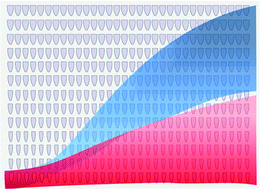Our official English website, www.x-mol.net, welcomes your
feedback! (Note: you will need to create a separate account there.)
Deformability based sorting of stored red blood cells reveals donor-dependent aging curves.
Lab on a Chip ( IF 6.1 ) Pub Date : 2019-12-04 , DOI: 10.1039/c9lc01058k Emel Islamzada 1 , Kerryn Matthews 2 , Quan Guo 3 , Aline T Santoso 2 , Simon P Duffy 4 , Mark D Scott 5 , Hongshen Ma 6
Lab on a Chip ( IF 6.1 ) Pub Date : 2019-12-04 , DOI: 10.1039/c9lc01058k Emel Islamzada 1 , Kerryn Matthews 2 , Quan Guo 3 , Aline T Santoso 2 , Simon P Duffy 4 , Mark D Scott 5 , Hongshen Ma 6
Affiliation

|
A fundamental challenge in the transfusion of red blood cells (RBCs) is that a subset of donated RBC units may not provide optimal benefit to transfusion recipients. This variability stems from the inherent ability of donor RBCs to withstand the physical and chemical insults of cold storage, which ultimately dictate their survival in circulation. The loss of RBC deformability during cold storage is well-established and has been identified as a potential biomarker for the quality of donated RBCs. While RBC deformability has traditionally been indirectly inferred from rheological characteristics of the bulk suspension, there has been considerable interest in directly measuring the deformation of RBCs. Microfluidic technologies have enabled single cell measurement of RBC deformation but have not been able to consistently distinguish differences between RBCs between healthy donors. Using the microfluidic ratchet mechanism, we developed a method to sensitively and consistently analyze RBC deformability. We found that the aging curve of RBC deformability varies significantly across donors, but is consistent for each donor over multiple donations. Specifically, certain donors seem capable of providing RBCs that maintain their deformability during two weeks of cold storage in standard test tubes. The ability to distinguish between RBC units with different storage potential could provide a valuable opportunity to identify donors capable of providing RBCs that maintain their integrity, in order to reserve these units for sensitive transfusion recipients.
中文翻译:

基于可变形性的存储红细胞分类显示了供体依赖性衰老曲线。
红细胞(RBC)输血的根本挑战是捐赠的RBC单位的一部分可能无法为输血接受者提供最佳利益。这种可变性源于供体RBC承受冷藏的物理和化学损伤的内在能力,最终决定了它们在循环中的生存能力。冷藏过程中红细胞变形能力的丧失是公认的,并已被确定为捐赠红细胞质量的潜在生物标记。传统上,RBC的可变形性是通过本体悬浮液的流变特性间接推断的,但人们对直接测量RBC的变形有相当大的兴趣。微流体技术已使单细胞测量RBC变形成为可能,但无法始终如一地区分健康供体之间RBC之间的差异。使用微流体棘轮机制,我们开发了一种方法,可以灵敏且一致地分析RBC的可变形性。我们发现,RBC变形能力的衰老曲线在各个捐献者之间变化很大,但是在多次捐献中每个捐献者都是一致的。具体而言,某些供体似乎能够提供在标准试管中冷藏两周后能保持其变形能力的RBC。区分具有不同存储潜力的RBC单位的能力可以提供宝贵的机会,以识别能够提供能够维持其完整性的RBC的捐助者,
更新日期:2020-02-13
中文翻译:

基于可变形性的存储红细胞分类显示了供体依赖性衰老曲线。
红细胞(RBC)输血的根本挑战是捐赠的RBC单位的一部分可能无法为输血接受者提供最佳利益。这种可变性源于供体RBC承受冷藏的物理和化学损伤的内在能力,最终决定了它们在循环中的生存能力。冷藏过程中红细胞变形能力的丧失是公认的,并已被确定为捐赠红细胞质量的潜在生物标记。传统上,RBC的可变形性是通过本体悬浮液的流变特性间接推断的,但人们对直接测量RBC的变形有相当大的兴趣。微流体技术已使单细胞测量RBC变形成为可能,但无法始终如一地区分健康供体之间RBC之间的差异。使用微流体棘轮机制,我们开发了一种方法,可以灵敏且一致地分析RBC的可变形性。我们发现,RBC变形能力的衰老曲线在各个捐献者之间变化很大,但是在多次捐献中每个捐献者都是一致的。具体而言,某些供体似乎能够提供在标准试管中冷藏两周后能保持其变形能力的RBC。区分具有不同存储潜力的RBC单位的能力可以提供宝贵的机会,以识别能够提供能够维持其完整性的RBC的捐助者,











































 京公网安备 11010802027423号
京公网安备 11010802027423号